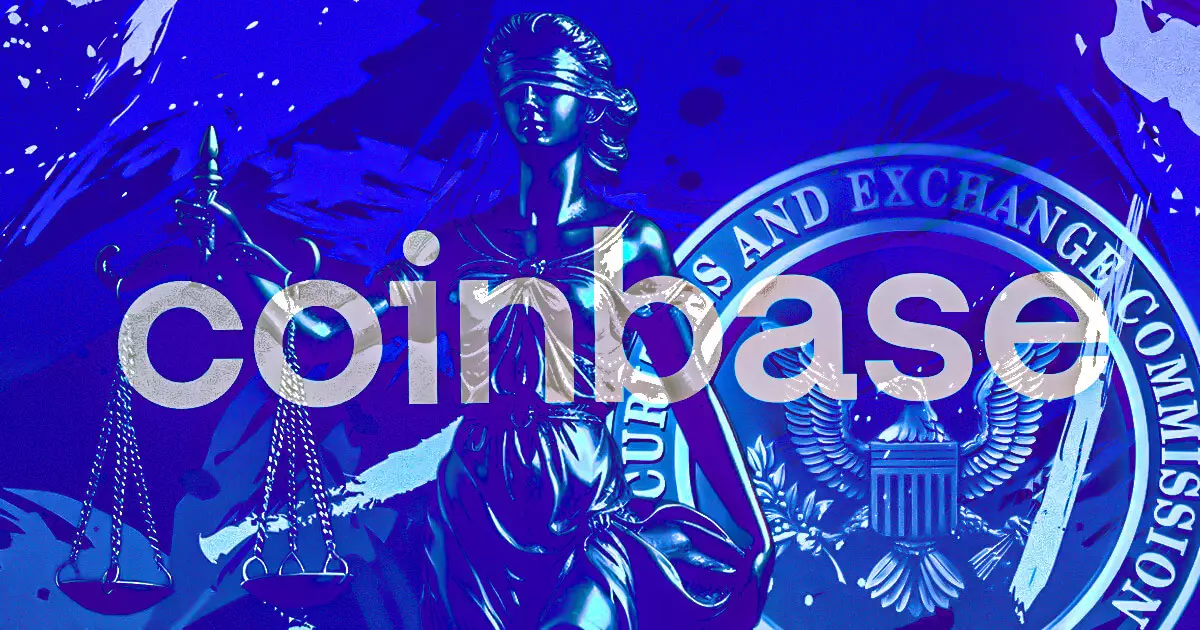In a significant development for the cryptocurrency landscape, Coinbase, one of the leading cryptocurrency exchanges, has come to a preliminary settlement with the staff of the U.S. Securities and Exchange Commission (SEC) regarding a contentious enforcement action against it. This momentous turn has not only sent Bitcoin prices soaring past $99,000 but also reignited discussions about the balance between regulatory authority and innovation within the cryptocurrency sector. This settlement is perceived by many as a landmark event, illuminating the complex interplay between crypto firms and regulatory bodies.
The legal confrontation began when the SEC undertook measures that Coinbase deemed an overreach. Specifically, the SEC’s attempt to mandate the delisting of certain digital assets posed a serious challenge to the exchange’s operational integrity. CEO Brian Armstrong articulated that the SEC’s actions could be seen as exceeding its statutory mandate, raising questions about how cryptocurrencies are classified as securities. The legal struggle was emblematic of a broader conflict around asset classification, and regulatory jurisdiction—a contentious issue that has implications not just for Coinbase but for the crypto industry at large.
The recent agreement, pending final approval by the SEC, stipulates that the case against Coinbase will be dismissed without any fines or modifications to the company’s business practices. Armstrong expressed optimism that a formal dismissal would be finalized next week. The implications of this resolution are profound; it signals a potential thawing in relations between Coinbase and regulatory authorities, paving the way for clearer regulatory guidelines in the future. Armstrong’s public statements emphasized the broader significance of this case beyond Coinbase, proposing that it is about establishing a regulatory framework for the entire industry—a framework rooted in legal definitions rather than arbitrary enforcement.
The dismissal of the case holds considerable promise for future regulatory clarity surrounding digital assets. It suggests that other firms in the sector can contest similar enforcement actions, establishing a precedent for more amicable engagement with the SEC. The outcome encourages firms to maintain adherence to legal frameworks and indicates that they can challenge ambiguous regulatory interpretations without bear massive penalties.
Moreover, Armstrong’s acknowledgment of political influences in this matter adds another layer to the discussion. He credited the Trump administration and its approach to crypto regulation for paving the way for this favorable resolution. This acknowledgment points to the intricate relationship between politics and regulation within the crypto space, reminding stakeholders that changes in political leadership can significantly affect regulatory sentiment.
While the immediate fallout from the Coinbase settlement appears favorable, it is important to note that it does not eliminate all uncertainties surrounding cryptocurrency regulation. There remain critical questions about how regulatory bodies will define and govern digital assets moving forward. Industry experts argue that this resolution must act as a catalyst for legislative efforts aimed at formulating comprehensive and coherent regulatory frameworks—ones that protect consumer interests while allowing innovation to flourish.
As the crypto market continues to evolve, the implications of this settlement extend beyond Coinbase itself, prompting all market participants, from developers to investors, to reconsider their strategies and approaches. The ongoing dialogue between regulators and crypto companies will shape the future of the industry, making it essential for both sides to engage constructively.
The resolution of the Coinbase enforcement case is a pivotal moment in the ongoing narrative of cryptocurrency regulation. It serves as a critical reminder of the need for dialogue and cooperation between innovative industries and regulatory agencies. As market players analyze the fallout from this development, the evolving landscape of digital assets will likely lead to further discussions on how to align regulations with the unique characteristics of cryptocurrencies. This case not only illustrates current tensions but also sets the stage for future engagements, ensuring that as the digital asset arena grows, it does so with a better grasp of the rules that govern it.


Leave a Reply